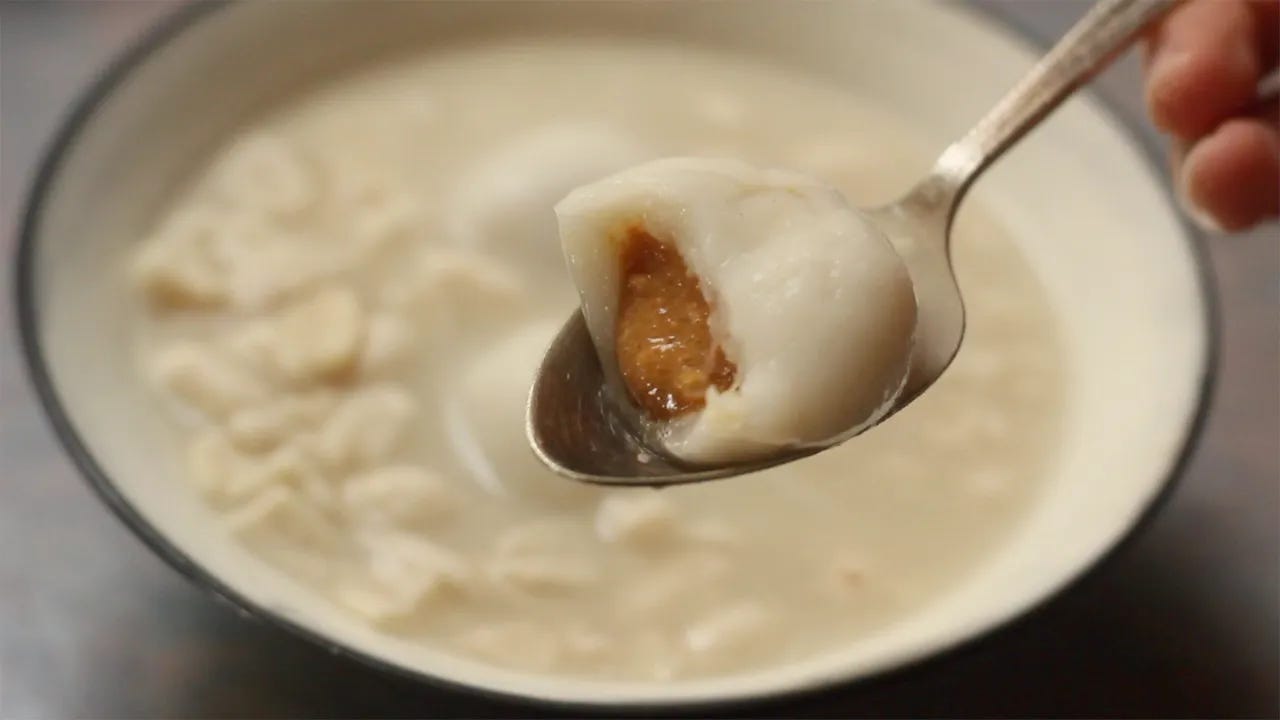Now that we’re in the thick of winter here in the Netherlands, I finally understand why the Chinese (both those living in China and in diasporic communities around the world) have been making glutinous rice balls to mark the winter solstice for centuries. They are one of the most perfect things to warm up with, particularly when served in a broth brewed from ginger and red dates, two ingredients that help to get the blood going.
You don’t really need a recipe to make this, only a sensitivity towards the dough, and an awareness for how sweet you like your desserts to be. In fact, when I initially made this dessert last week, the dough was made by stirring lukewarm water into glutinous rice flour by eye and bringing it together by hand. The black sesame filling was simply toasted sesame seeds, blitzed with sugar to taste and enough butter to turn everything into a paste. The broth was reconstituted red date tea powder courtesy of my mom, with a few bruised coins of ginger for heat.
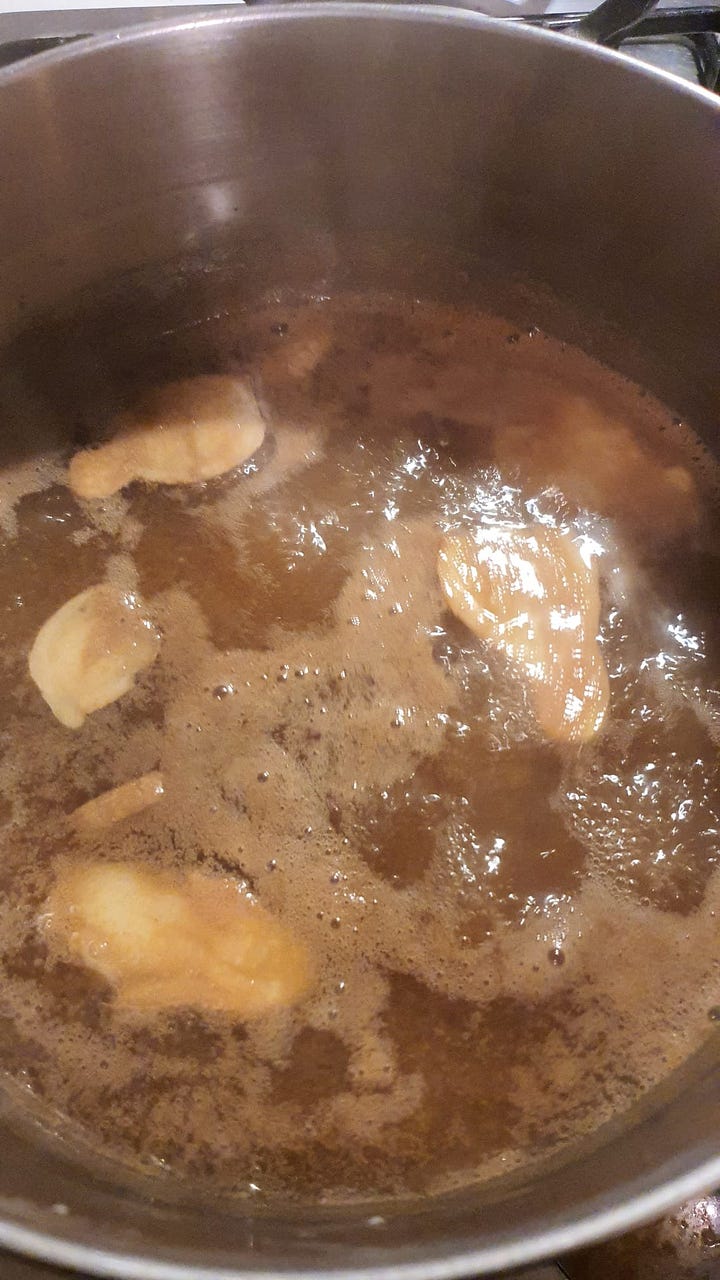
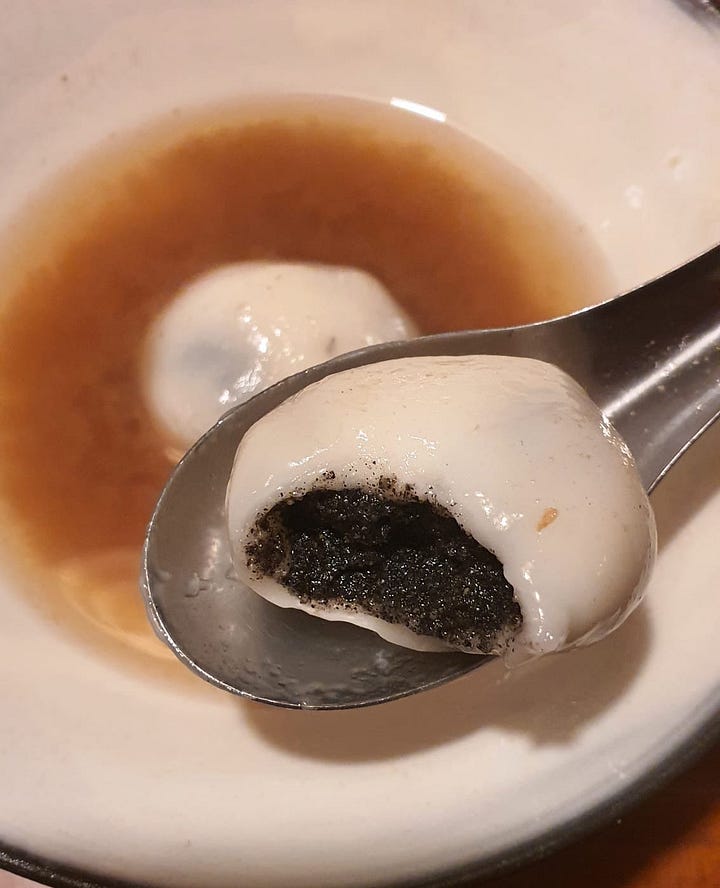
The result was soothing and so warming that it turned my cheeks pink, good enough for any cravings to be satisfied. But the cold weather didn’t let up and it even began to snow, so I made even more of these dumplings, thinking that it would be fun to see how much better they could be if I put in a little more care. A lot, as it turns out.
Filling
In a past newsletter, Yeo Min, author of Chinese Pastry School, shared a technique for toasting sesame seeds. The idea is to rinse sesame seeds in a sieve, then add them to a covered saucepan. As the seeds steam, they warm up gradually, allowing them to toast up evenly golden. While I don’t do this every time I toast sesame seeds, it is an incredible technique for when you really want to call attention to their flavour.
The other thing I did was to add a sprinkle of white sesame seeds. Toasting black sesame seeds often relies on guesswork - you might rely on your sense of smell or nibble on a few seeds as you go, but there’s no definite way to know when to pull the seeds from the pan. A tablespoon of white sesame seeds added to the mix solves the issue entirely - when they turned golden brown, I transferred the seeds to my blender.
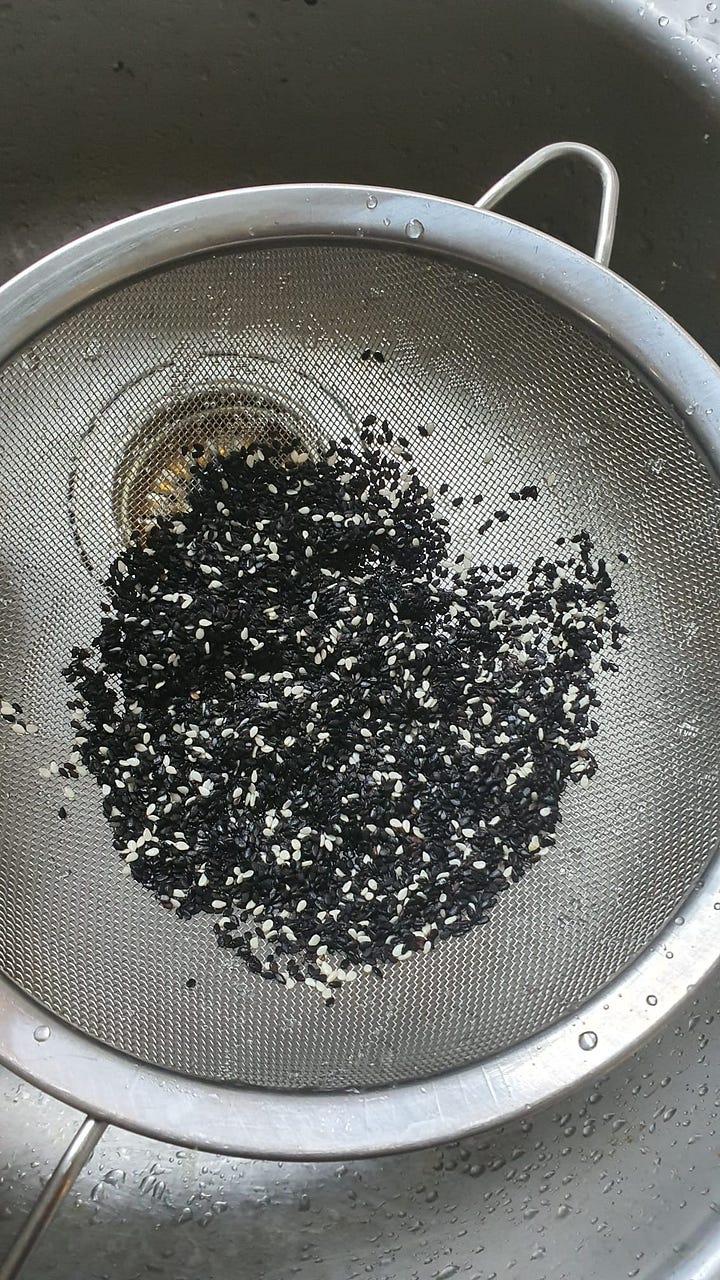
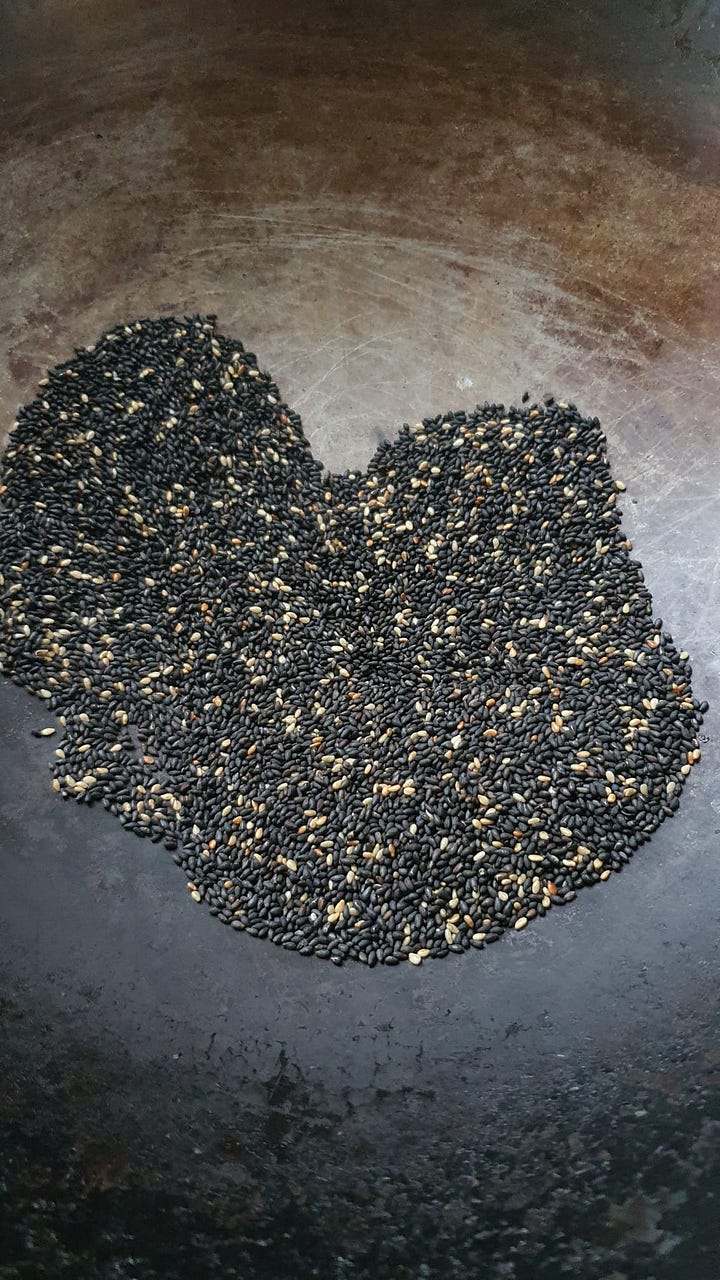
In my first attempt, the cooked filling was more like a paste than the lava that I had in mind. Naturally, I thought of increasing the butter content (when the dumplings cook, the butter in the filling melts, creating ooze). But I also came across recipes that used a mixture of butter and water in the filling. I gave both a try. The filling with extra butter (left) was lighter in colour and smoother, like whipped black sesame butter. The filling made with a mix of butter and water (right) was grittier, but the flavour of black sesame came through more. I set them in the fridge while I made the dough.
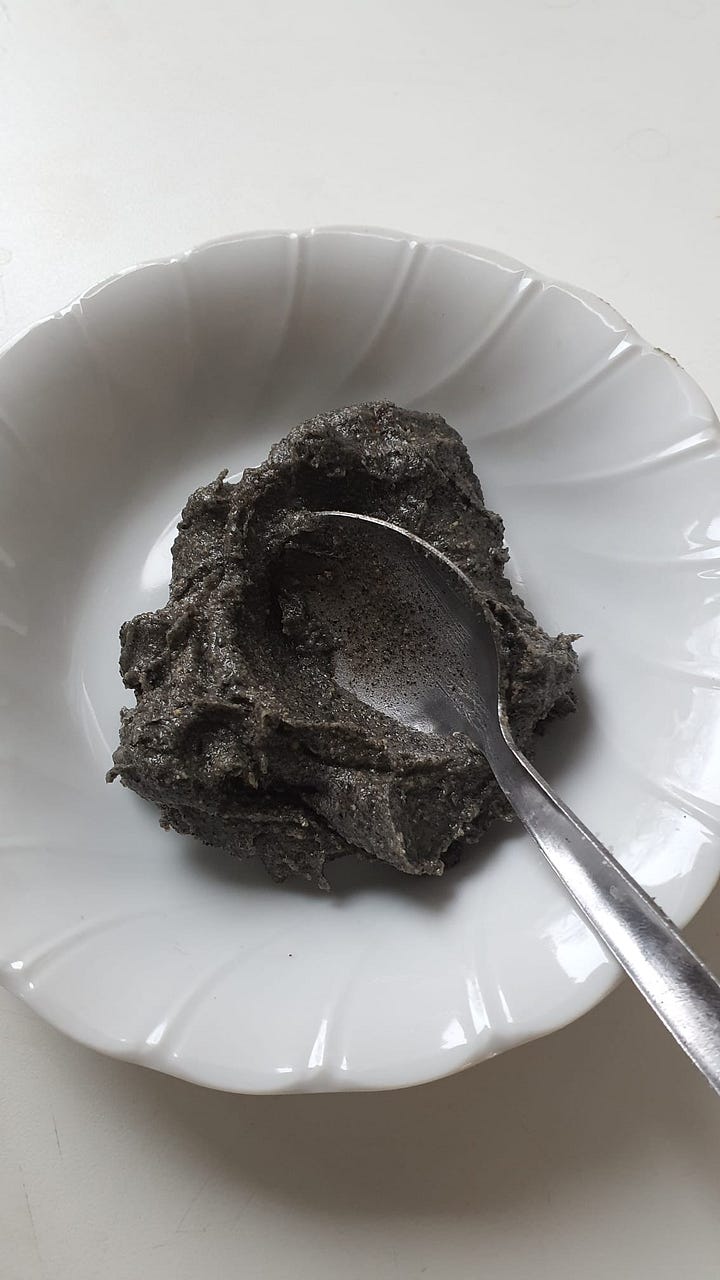
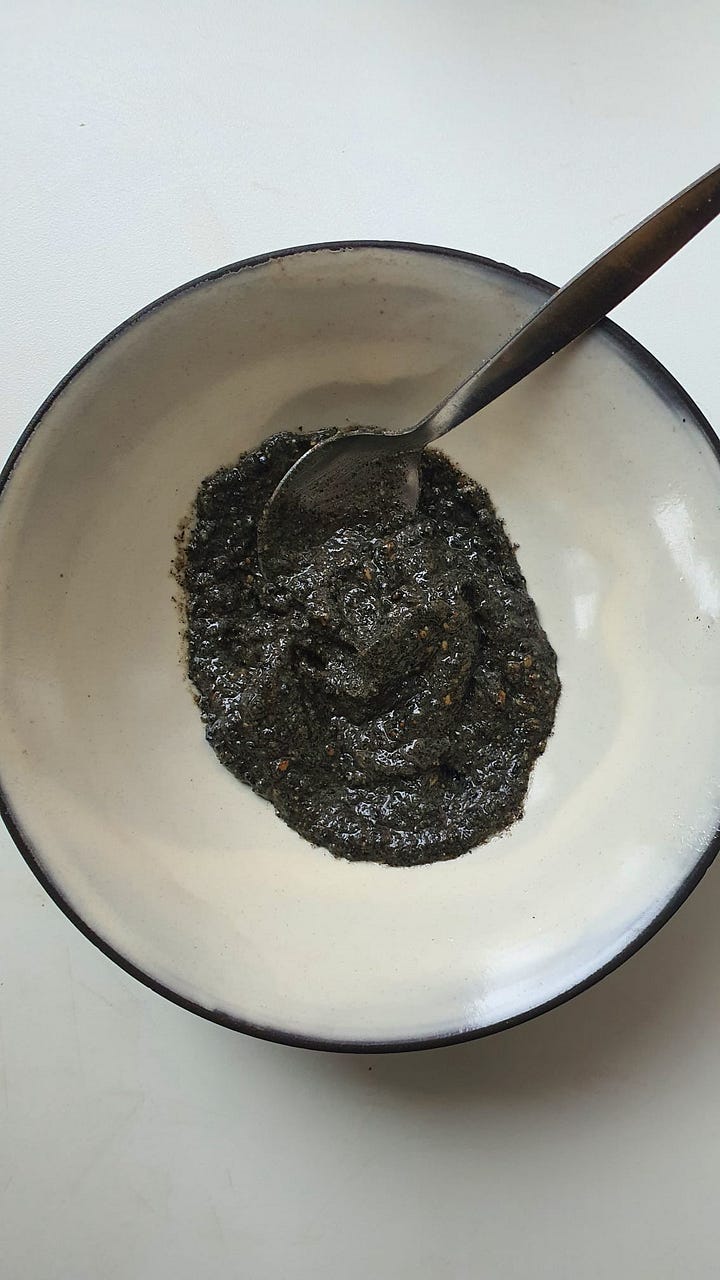
Dough
I was not happy with the way that the dumplings in my first attempt turned out slightly squat rather than perfectly spherical. The dough made with glutinous rice flour and warm water was tricky to work with, being far too crumbly to wrap around the filling if there was too little water, and deflating slightly when cooked if the dough contained too much moisture. After looking at some recipes, the solution was clear: cook some of the starch. Many recipes involve cooking part of the dough and kneading this into the rest of the dough, but I figured that using part boiling water, part tap water would have the same effect. The resulting dough was as supple and tender as a baby’s earlobe and incredibly elastic, which came in handy when shaping these dumplings.

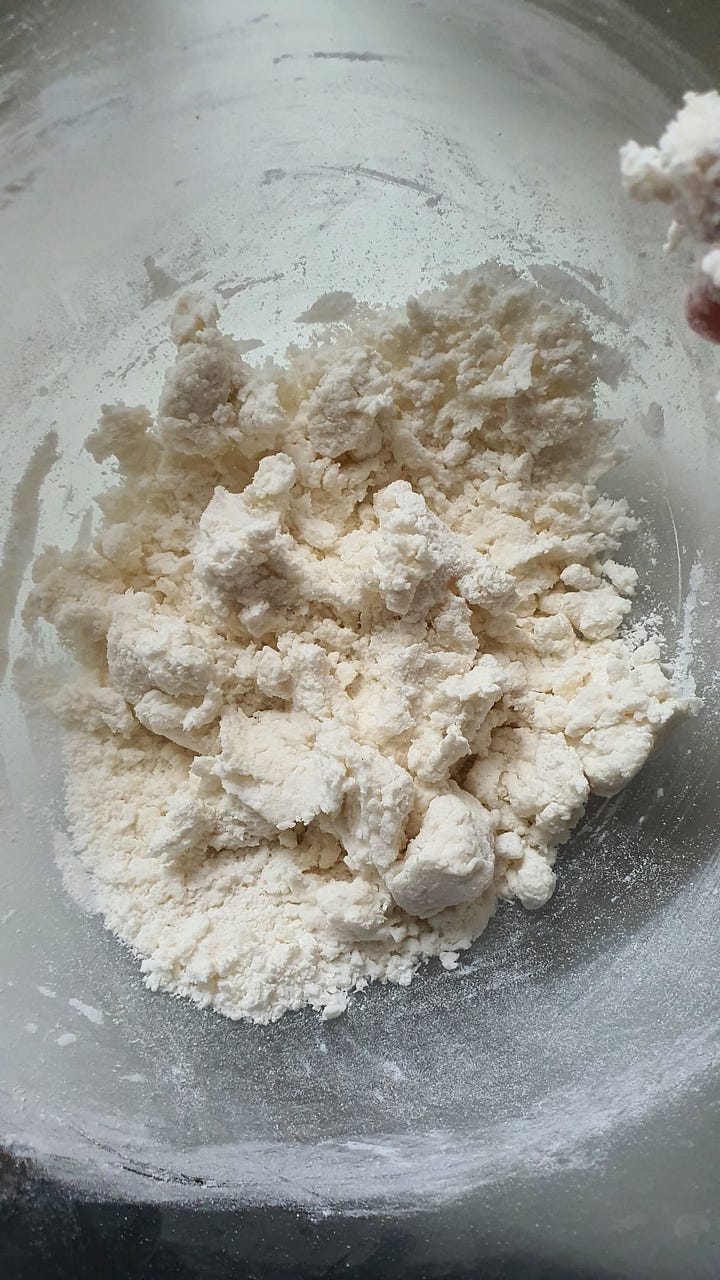
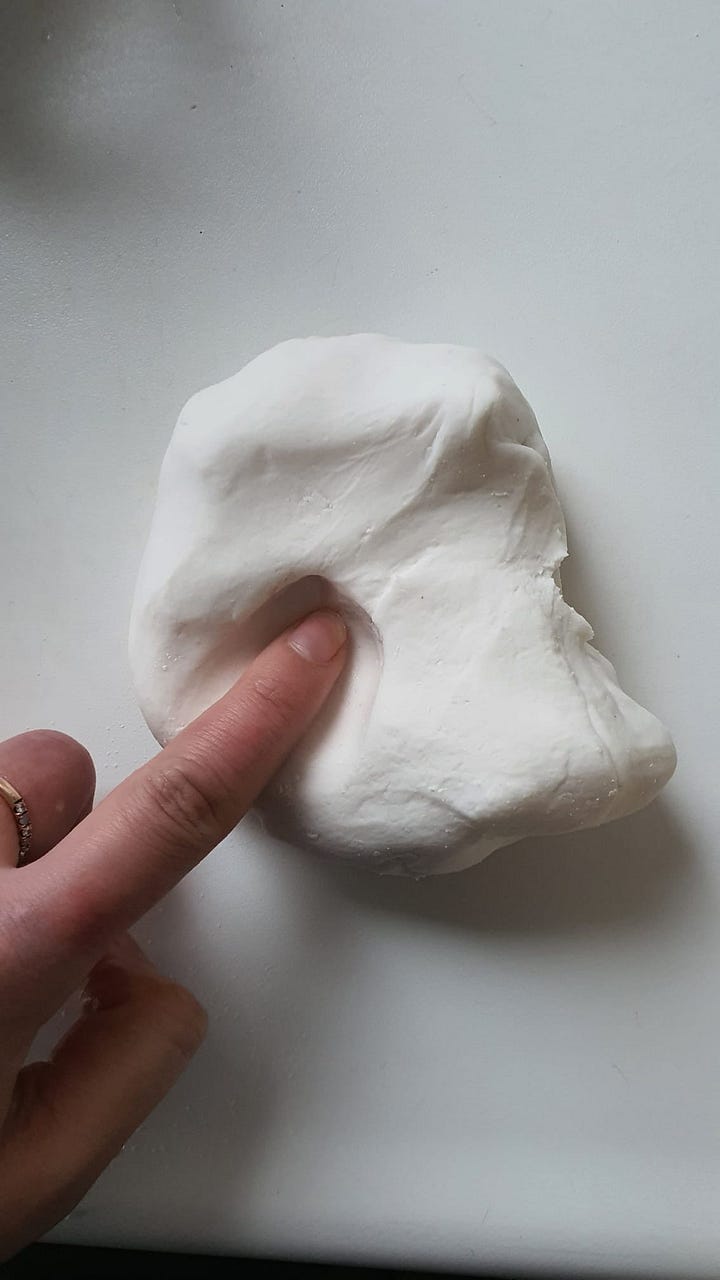
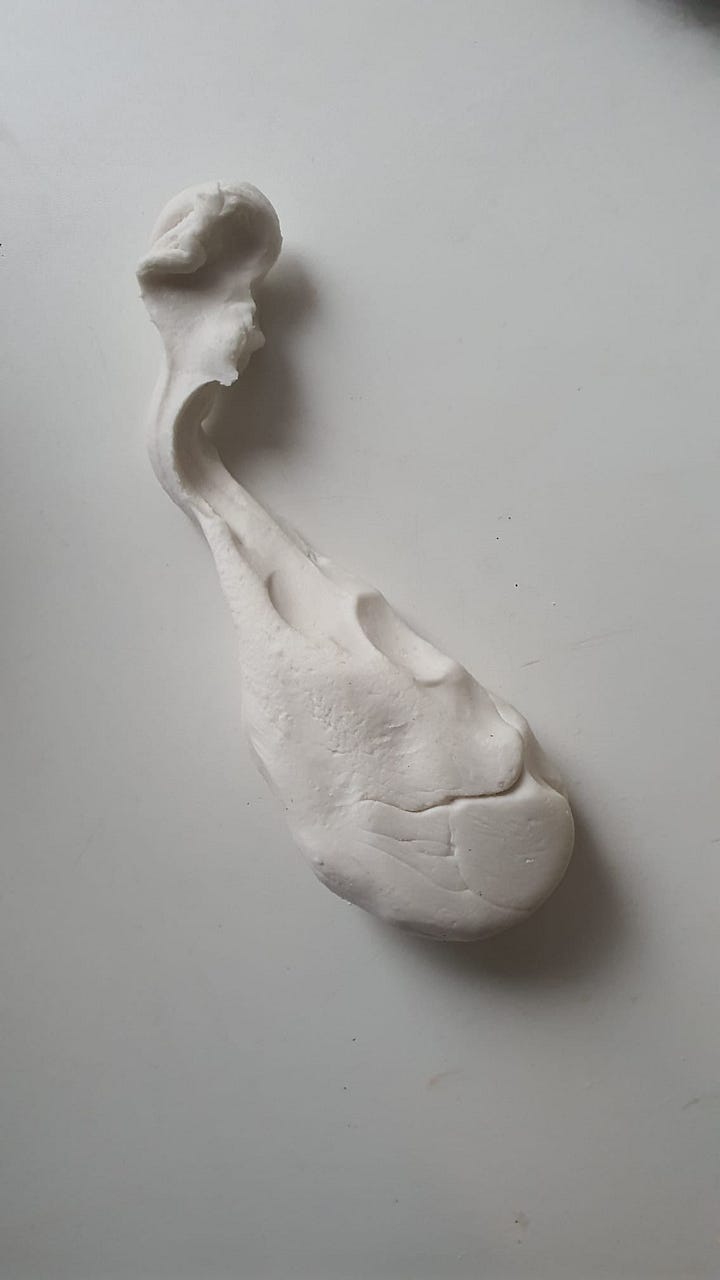
By the time the dough was made, the fillings had firmed up enough to be rolled into small balls. As expected, the filling with the higher butter percentage firmed up more and made assembly a breeze.
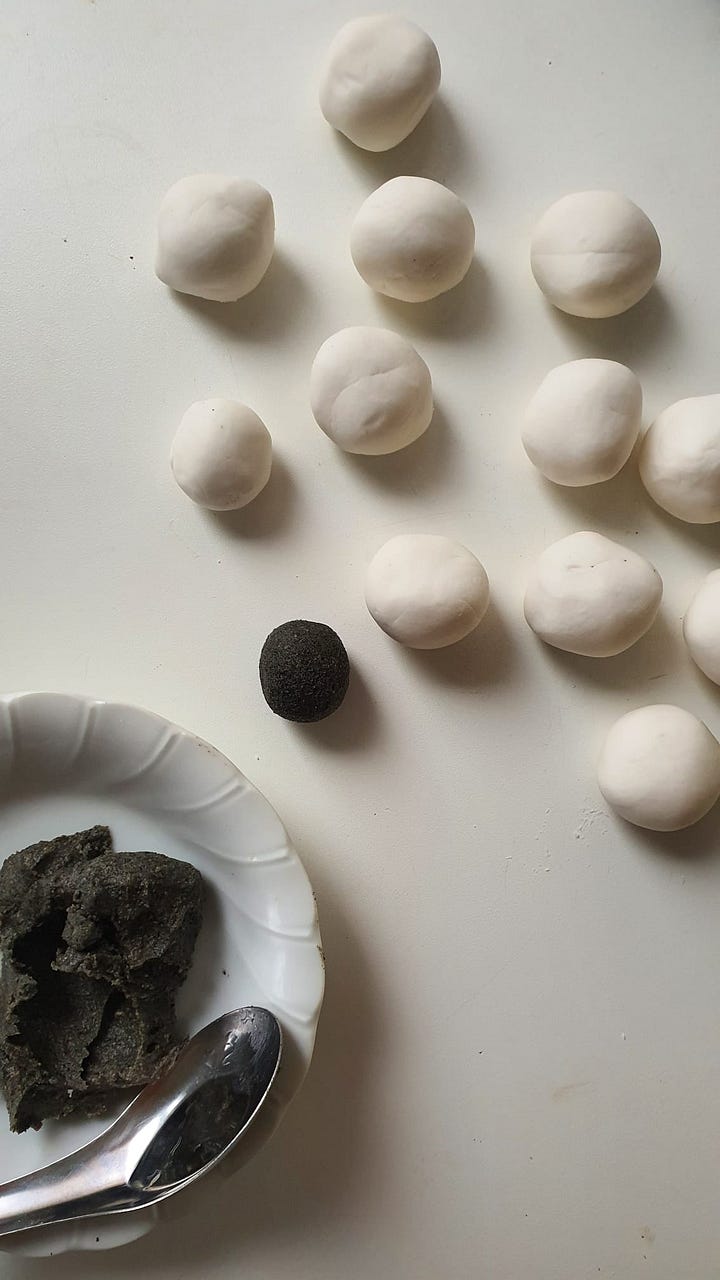
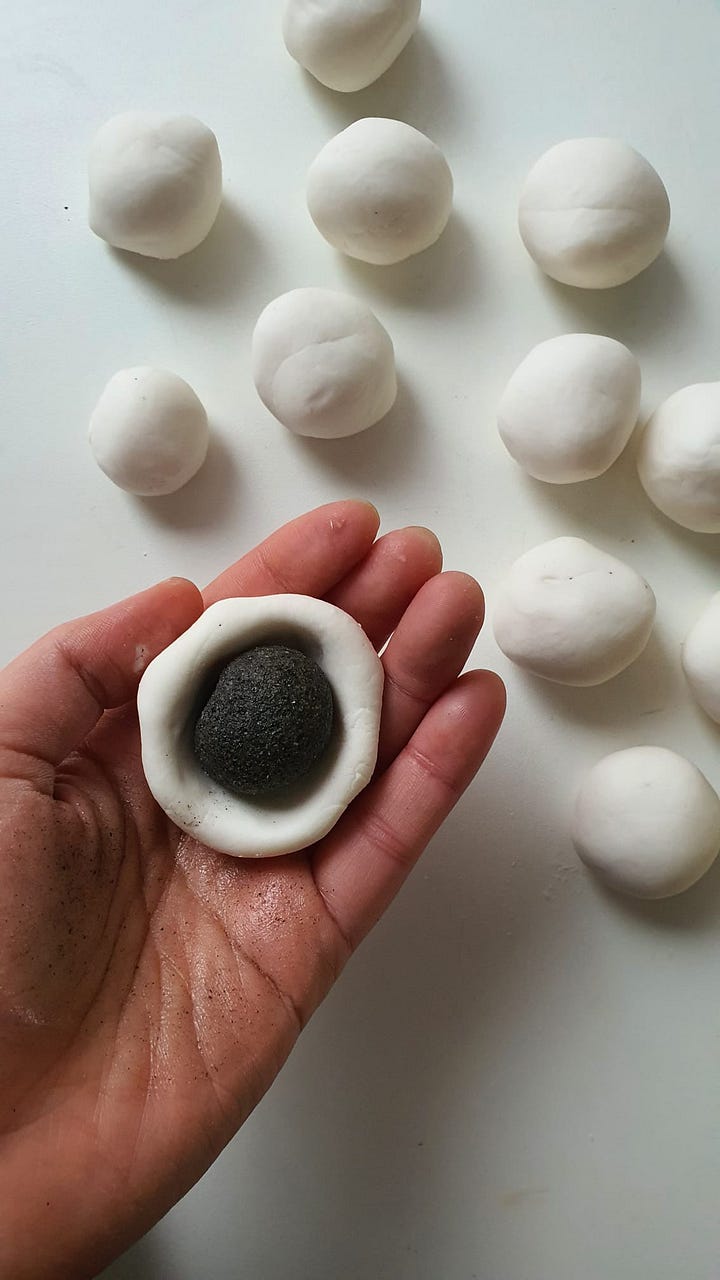
Texture- and flavour-wise, the filling made with just butter (left) also came up top, which surprised me, given how muted the flavour was when I tasted it cold. When I bit into the dumpling, the molten filling burst through the back of the dumpling like an ondeh ondeh. It ticked every box - it was rich, smooth, fragrant, and molten as lava. I was also happy with the way the dough held its shape and the pleasant chew that the small measure of boiling water provided. I had high hopes for the filling with butter and water (right), given how it had such clarity of flavour pre-cooking, but it was disappointing. Lacking sufficient richness from butter, it tasted slightly bitter and had a gritty, watery mouthfeel.
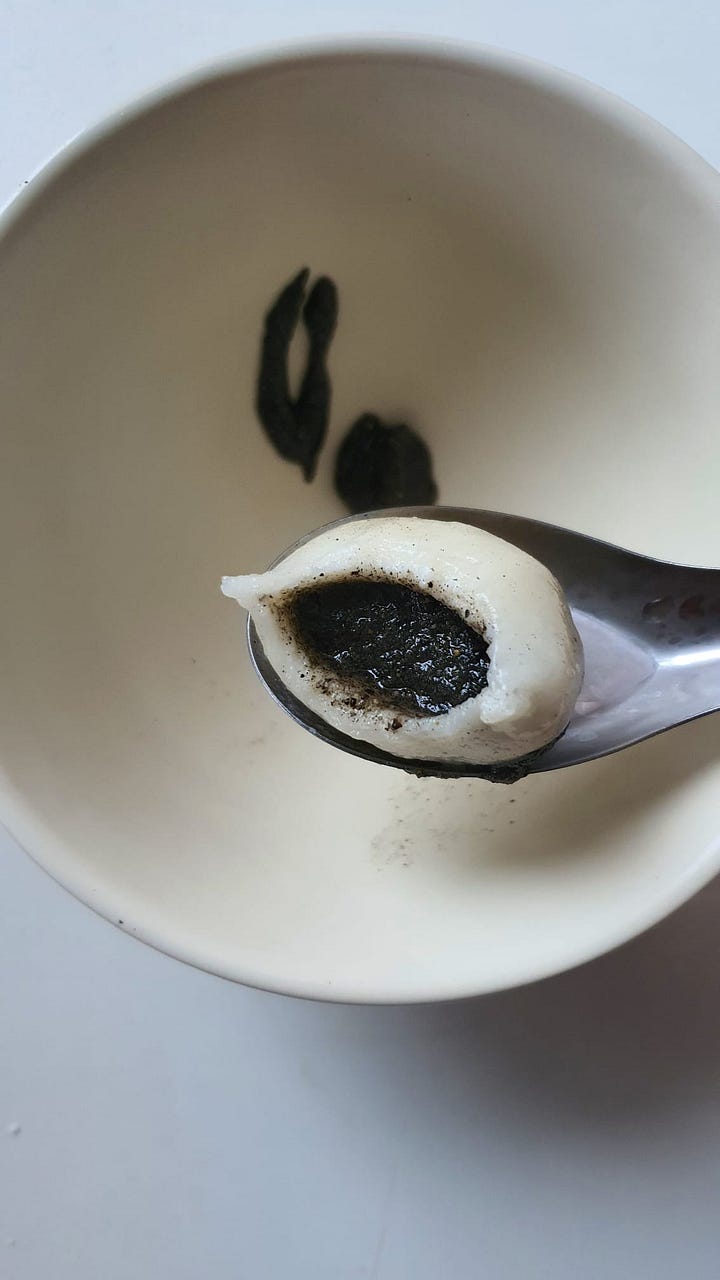
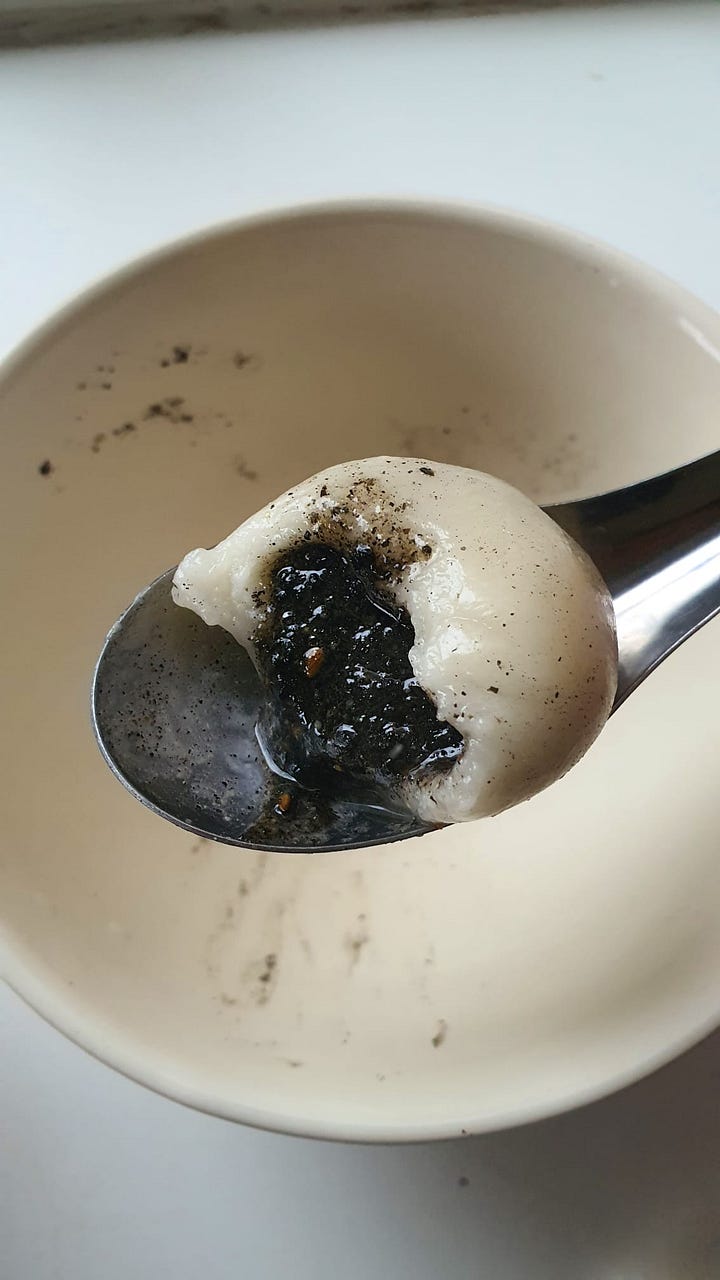
Broth
Some cooks serve their glutinous rice balls in syrup. But when I prepare this dessert, I make the broth closer to a tea because the filling is sweet and rich enough as it is. Making red date tea from scratch isn’t difficult and tastes better than the powdered, reconstituted version. All it takes is half an hour of simmering red dates, ginger, and pandan in water, and dissolving gula melaka into the resulting tea to barely sweeten it. Boil the dumplings separately, transfer them to deep bowls, and ladle over the hot tea. Simple, indulgent, and quietly sublime.

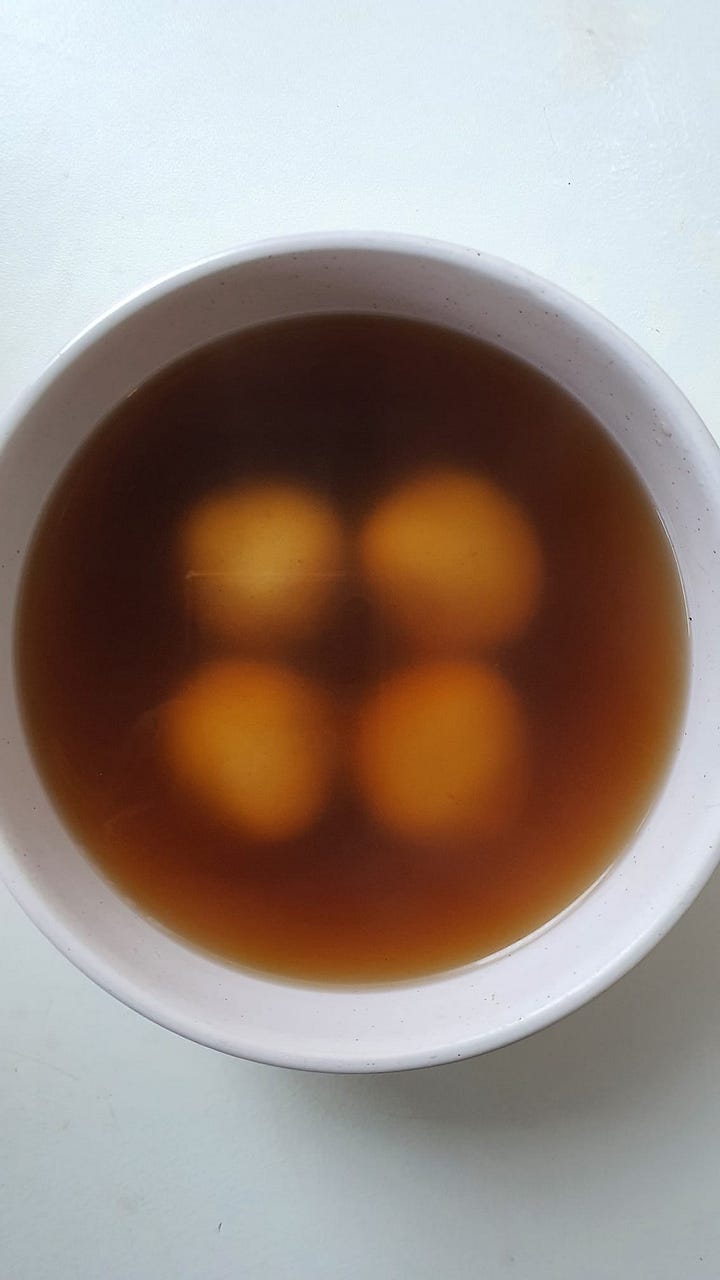
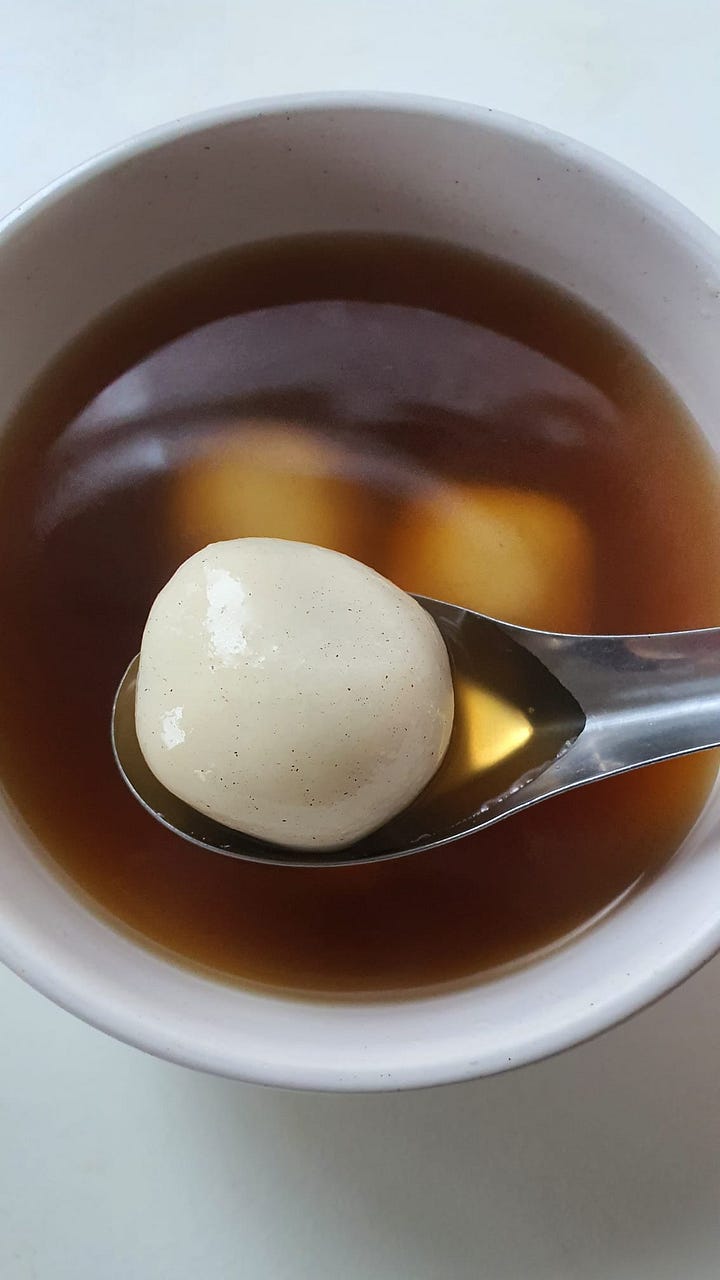
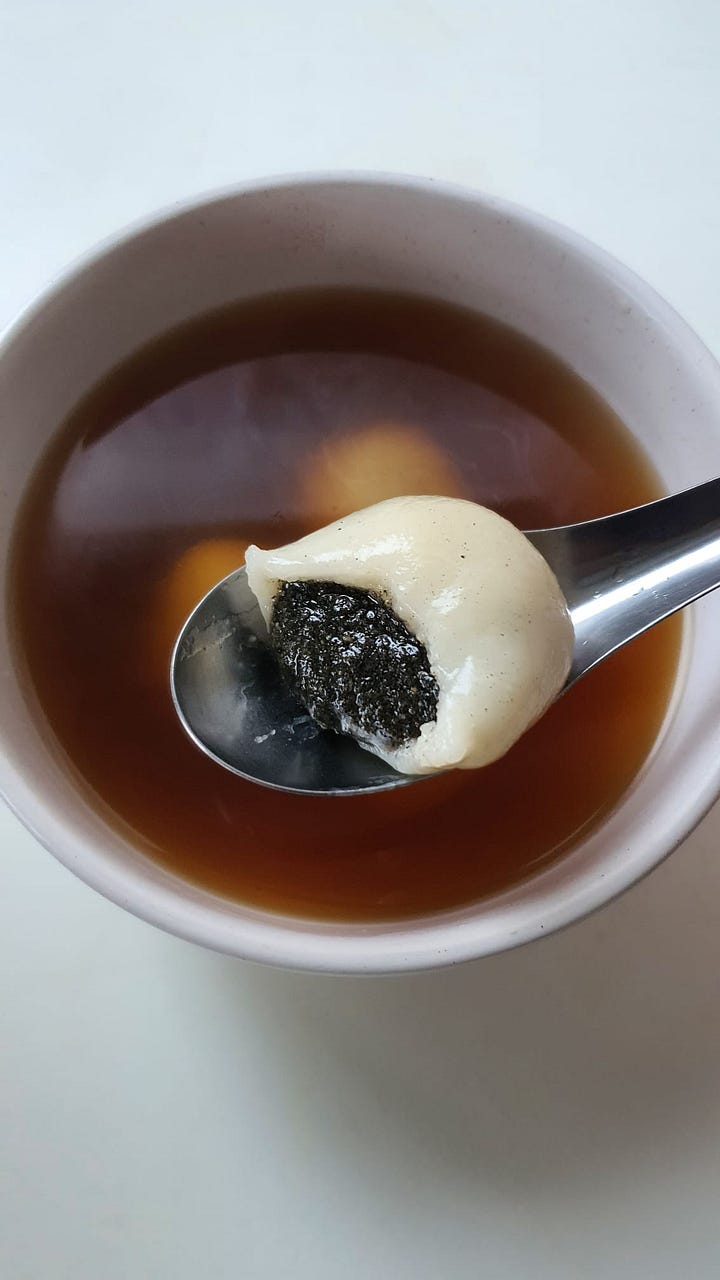
Glutinous rice dumplings with black sesame or peanut butter filling
MAKES 6 SERVINGS




